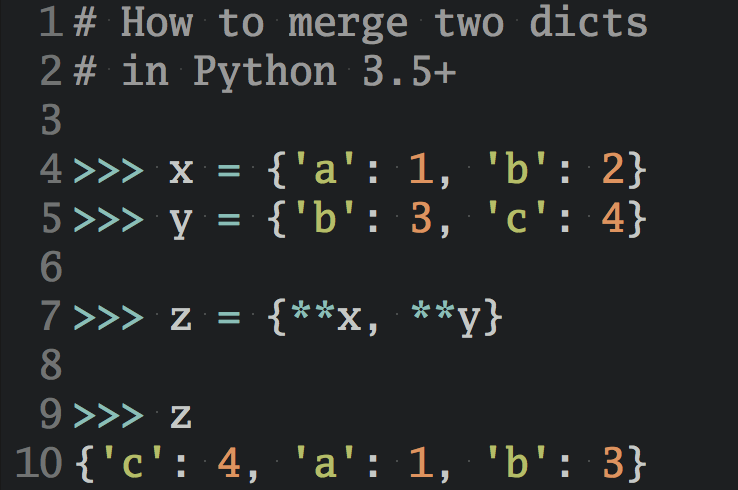Предыдущая статья — Играем в GTA V c Python. Часть VI: определяем линии разметки для нашего беспилотного автомобиля.
Пока мы обдумывали следующие шаги, нам было любопытно поразмышлять над несколькими вариантами вождения с искусственным интеллектом. Одна из наших идей заключалась в том, что мы можем обнаружить две полосы движения, а затем попытаться сориентировать машину между этими полосами движения, при условии, что эти две полосы имеют разные уклоны.
Затем нам стало казаться, что задача еще проще. Мы заметили, что если уклон обоих линий совпадает, то мы приближаемся к одному из краев дороги.
А что, если мы просто будем придерживаться следующей логики:
- если у одной линии уклон положительный, а у другой — отрицательный, значит все ок, едем дальше прямо,
- если обеих полос уклон отрицательный, то мы слишком сильно забираем влево и нам надо свернуть вправо, и наоборот, если уклон обеих полос положительный, нам надо держаться левее.
Но разве может все быть так просто?
Вот наш стартовый код:
import numpy as np
from PIL import ImageGrab
import cv2
import time
from numpy import ones,vstack
from numpy.linalg import lstsq
from directkeys import PressKey, W, A, S, D
from statistics import mean
def roi(img, vertices):
#blank mask:
mask = np.zeros_like(img)
#filling pixels inside the polygon defined by "vertices" with the fill color
cv2.fillPoly(mask, vertices, 255)
#returning the image only where mask pixels are nonzero
masked = cv2.bitwise_and(img, mask)
return masked
def draw_lanes(img, lines, color=[0, 255, 255], thickness=3):
# if this fails, go with some default line
try:
# finds the maximum y value for a lane marker
# (since we cannot assume the horizon will always be at the same point.)
ys = []
for i in lines:
for ii in i:
ys += [ii[1],ii[3]]
min_y = min(ys)
max_y = 600
new_lines = []
line_dict = {}
for idx,i in enumerate(lines):
for xyxy in i:
# These four lines:
# modified from http://stackoverflow.com/questions/21565994/method-to-return-the-equation-of-a-straight-line-given-two-points
# Used to calculate the definition of a line, given two sets of coords.
x_coords = (xyxy[0],xyxy[2])
y_coords = (xyxy[1],xyxy[3])
A = vstack([x_coords,ones(len(x_coords))]).T
m, b = lstsq(A, y_coords)[0]
# Calculating our new, and improved, xs
x1 = (min_y-b) / m
x2 = (max_y-b) / m
line_dict[idx] = [m,b,[int(x1), min_y, int(x2), max_y]]
new_lines.append([int(x1), min_y, int(x2), max_y])
final_lanes = {}
for idx in line_dict:
final_lanes_copy = final_lanes.copy()
m = line_dict[idx][0]
b = line_dict[idx][1]
line = line_dict[idx][2]
if len(final_lanes) == 0:
final_lanes[m] = [ [m,b,line] ]
else:
found_copy = False
for other_ms in final_lanes_copy:
if not found_copy:
if abs(other_ms*1.2) > abs(m) > abs(other_ms*0.8):
if abs(final_lanes_copy[other_ms][0][1]*1.2) > abs(b) > abs(final_lanes_copy[other_ms][0][1]*0.8):
final_lanes[other_ms].append([m,b,line])
found_copy = True
break
else:
final_lanes[m] = [ [m,b,line] ]
line_counter = {}
for lanes in final_lanes:
line_counter[lanes] = len(final_lanes[lanes])
top_lanes = sorted(line_counter.items(), key=lambda item: item[1])[::-1][:2]
lane1_id = top_lanes[0][0]
lane2_id = top_lanes[1][0]
def average_lane(lane_data):
x1s = []
y1s = []
x2s = []
y2s = []
for data in lane_data:
x1s.append(data[2][0])
y1s.append(data[2][1])
x2s.append(data[2][2])
y2s.append(data[2][3])
return int(mean(x1s)), int(mean(y1s)), int(mean(x2s)), int(mean(y2s))
l1_x1, l1_y1, l1_x2, l1_y2 = average_lane(final_lanes[lane1_id])
l2_x1, l2_y1, l2_x2, l2_y2 = average_lane(final_lanes[lane2_id])
return [l1_x1, l1_y1, l1_x2, l1_y2], [l2_x1, l2_y1, l2_x2, l2_y2]
except Exception as e:
print(str(e))
def process_img(image):
original_image = image
# convert to gray
processed_img = cv2.cvtColor(image, cv2.COLOR_BGR2GRAY)
# edge detection
processed_img = cv2.Canny(processed_img, threshold1 = 200, threshold2=300)
processed_img = cv2.GaussianBlur(processed_img,(5,5),0)
vertices = np.array([[10,500],[10,300],[300,200],[500,200],[800,300],[800,500],
], np.int32)
processed_img = roi(processed_img, [vertices])
# more info: http://docs.opencv.org/3.0-beta/doc/py_tutorials/py_imgproc/py_houghlines/py_houghlines.html
# rho theta thresh min length, max gap:
lines = cv2.HoughLinesP(processed_img, 1, np.pi/180, 180, 20, 15)
try:
l1, l2 = draw_lanes(original_image,lines)
cv2.line(original_image, (l1[0], l1[1]), (l1[2], l1[3]), [0,255,0], 30)
cv2.line(original_image, (l2[0], l2[1]), (l2[2], l2[3]), [0,255,0], 30)
except Exception as e:
print(str(e))
pass
try:
for coords in lines:
coords = coords[0]
try:
cv2.line(processed_img, (coords[0], coords[1]), (coords[2], coords[3]), [255,0,0], 3)
except Exception as e:
print(str(e))
except Exception as e:
pass
return processed_img,original_image
def main():
last_time = time.time()
while True:
screen = np.array(ImageGrab.grab(bbox=(0,40,800,640)))
print('Frame took {} seconds'.format(time.time()-last_time))
last_time = time.time()
new_screen,original_image = process_img(screen)
cv2.imshow('window', new_screen)
cv2.imshow('window2',cv2.cvtColor(original_image, cv2.COLOR_BGR2RGB))
#cv2.imshow('window',cv2.cvtColor(screen, cv2.COLOR_BGR2RGB))
if cv2.waitKey(25) & 0xFF == ord('q'):
cv2.destroyAllWindows()
break
Для начала нам нужно логировать наклон двух верхних линий. В нашей функции draw_lanes мы для этого используем переменные lane1_id и lane2_id. Итак, на выходе этой функции мы просто должны вернуть эти параметры.
def draw_lanes(img, lines, color=[0, 255, 255], thickness=3):
# if this fails, go with some default line
try:
# finds the maximum y value for a lane marker
# (since we cannot assume the horizon will always be at the same point.)
ys = []
for i in lines:
for ii in i:
ys += [ii[1],ii[3]]
min_y = min(ys)
max_y = 600
new_lines = []
line_dict = {}
for idx,i in enumerate(lines):
for xyxy in i:
# These four lines:
# modified from http://stackoverflow.com/questions/21565994/method-to-return-the-equation-of-a-straight-line-given-two-points
# Used to calculate the definition of a line, given two sets of coords.
x_coords = (xyxy[0],xyxy[2])
y_coords = (xyxy[1],xyxy[3])
A = vstack([x_coords,ones(len(x_coords))]).T
m, b = lstsq(A, y_coords)[0]
# Calculating our new, and improved, xs
x1 = (min_y-b) / m
x2 = (max_y-b) / m
line_dict[idx] = [m,b,[int(x1), min_y, int(x2), max_y]]
new_lines.append([int(x1), min_y, int(x2), max_y])
final_lanes = {}
for idx in line_dict:
final_lanes_copy = final_lanes.copy()
m = line_dict[idx][0]
b = line_dict[idx][1]
line = line_dict[idx][2]
if len(final_lanes) == 0:
final_lanes[m] = [ [m,b,line] ]
else:
found_copy = False
for other_ms in final_lanes_copy:
if not found_copy:
if abs(other_ms*1.2) > abs(m) > abs(other_ms*0.8):
if abs(final_lanes_copy[other_ms][0][1]*1.2) > abs(b) > abs(final_lanes_copy[other_ms][0][1]*0.8):
final_lanes[other_ms].append([m,b,line])
found_copy = True
break
else:
final_lanes[m] = [ [m,b,line] ]
line_counter = {}
for lanes in final_lanes:
line_counter[lanes] = len(final_lanes[lanes])
top_lanes = sorted(line_counter.items(), key=lambda item: item[1])[::-1][:2]
lane1_id = top_lanes[0][0]
lane2_id = top_lanes[1][0]
def average_lane(lane_data):
x1s = []
y1s = []
x2s = []
y2s = []
for data in lane_data:
x1s.append(data[2][0])
y1s.append(data[2][1])
x2s.append(data[2][2])
y2s.append(data[2][3])
return int(mean(x1s)), int(mean(y1s)), int(mean(x2s)), int(mean(y2s))
l1_x1, l1_y1, l1_x2, l1_y2 = average_lane(final_lanes[lane1_id])
l2_x1, l2_y1, l2_x2, l2_y2 = average_lane(final_lanes[lane2_id])
return [l1_x1, l1_y1, l1_x2, l1_y2], [l2_x1, l2_y1, l2_x2, l2_y2], lane1_id, lane2_id
except Exception as e:
print(str(e))
Далее нам нужно обработать все это в нашей функции process_img. Поэтому при вызове draw_lanes мы также сохраняем уклоны:
def process_img(image):
original_image = image
# convert to gray
processed_img = cv2.cvtColor(image, cv2.COLOR_BGR2GRAY)
# edge detection
processed_img = cv2.Canny(processed_img, threshold1 = 200, threshold2=300)
processed_img = cv2.GaussianBlur(processed_img,(5,5),0)
vertices = np.array([[10,500],[10,300],[300,200],[500,200],[800,300],[800,500],
], np.int32)
processed_img = roi(processed_img, [vertices])
# more info: http://docs.opencv.org/3.0-beta/doc/py_tutorials/py_imgproc/py_houghlines/py_houghlines.html
# rho theta thresh min length, max gap:
lines = cv2.HoughLinesP(processed_img, 1, np.pi/180, 180, 20, 15)
m1 = 0
m2 = 0
try:
l1, l2, m1,m2 = draw_lanes(original_image,lines)
cv2.line(original_image, (l1[0], l1[1]), (l1[2], l1[3]), [0,255,0], 30)
cv2.line(original_image, (l2[0], l2[1]), (l2[2], l2[3]), [0,255,0], 30)
except Exception as e:
print(str(e))
pass
try:
for coords in lines:
coords = coords[0]
try:
cv2.line(processed_img, (coords[0], coords[1]), (coords[2], coords[3]), [255,0,0], 3)
except Exception as e:
print(str(e))
except Exception as e:
pass
return processed_img,original_image, m1, m2
Обратите внимание, что мы также задаем для обоих уклонов значение, равное по умолчанию 0, — на тот случай, если наша функция draw_lanes не сработает должным образом, что вполне может быть. Теперь давайте определим некоторые управляющие функции:
def straight():
PressKey(W)
ReleaseKey(A)
ReleaseKey(D)
def left():
PressKey(A)
ReleaseKey(W)
ReleaseKey(D)
ReleaseKey(A)
def right():
PressKey(D)
ReleaseKey(A)
ReleaseKey(W)
ReleaseKey(D)
def slow_ya_roll():
ReleaseKey(W)
ReleaseKey(A)
ReleaseKey(D)
И наконец:
def main():
last_time = time.time()
while True:
screen = np.array(ImageGrab.grab(bbox=(0,40,800,640)))
print('Frame took {} seconds'.format(time.time()-last_time))
last_time = time.time()
new_screen,original_image, m1, m2 = process_img(screen)
#cv2.imshow('window', new_screen)
cv2.imshow('window2',cv2.cvtColor(original_image, cv2.COLOR_BGR2RGB))
if m1 < 0 and m2 < 0:
right()
elif m1 > 0 and m2 > 0:
left()
else:
straight()
#cv2.imshow('window',cv2.cvtColor(screen, cv2.COLOR_BGR2RGB))
if cv2.waitKey(25) & 0xFF == ord('q'):
cv2.destroyAllWindows()
break
Разумеется, все это не идеально. Иногда машина едет слишком быстро, уходит с полосы движения и пропадает. Но что для нас интересно, в большом количестве случаев это реально работает. А когда не работает, то из-за того, что система определения полос движения сходит с ума, и мы легко можем установить, при каких обстоятельствах это происходит.
Для нас это очень важная вещь, так как мы можем начать нарабатывать данные для обучения в ситуациях, где определяющим фактором успеха (или неуспеха) является наличие положительного или отрицательного уклона и нашей реакции на это.
Теперь мы можем использовать все это для создания тренировочного датасета, а также пробовать некоторые другие сценарии.
Следующая статья — Играем в GTA V c Python. Часть VIII: дальнейшие шаги по созданию беспилотного автомобиля.

